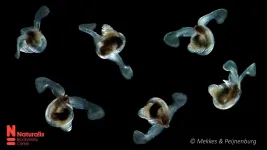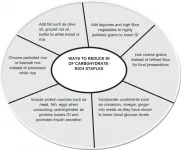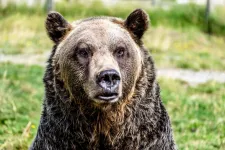Sea butterflies already struggle in acidifying Southern Ocean
2021-03-04
(Press-News.org) The oceans are becoming more acidic because of the rapid release of carbon dioxide (CO2) caused by anthropogenic (human) activities, such as burning of fossil fuels. So far, the oceans have taken up around 30% of all anthropogenic CO2 released to the atmosphere. The continuous increase of CO2 has a substantial effect on ocean chemistry because CO2 reacts with water and carbonate molecules. This process, called 'ocean acidification', lowers pH, and calcium carbonate becomes less available. This is a problem for calcifying organisms, such as corals and molluscs, that use calcium carbonate as the main building blocks of their exoskeleton.
In particular, organisms that build their shells from a type of calcium carbonate known as 'aragonite' are in trouble because aragonite is extremely soluble in sea water. Sea butterflies, tiny, swimming sea snails, build their shells of aragonite. Therefore, they are also known as 'the canaries of the coalmine' because they are expected to be amongst the first organisms to be affected by ocean acidification.
The Southern Ocean, around the Antarctic continent, is a region of high concern regarding ocean acidification. Globally, this region will experience acidified conditions first, because colder waters take up CO2 more readily. This is comparable to soda: you will find more bubbles dissolved in your soda when it is cold. Already within several decades, aragonite will be scarce in the Southern Ocean, posing a large problem for local sea life, such as sea butterflies.
Large numbers of sea butterflies inhabit the Southern Ocean and function as an important component of the food web where they are eaten by fish, seabirds and even whales. "It is important to gain a deeper understanding of the impacts of an increasingly acidifying ocean on the shell growth of sea butterflies", says Lisette Mekkes, PhD student at Naturalis Biodiversity Center and the University of Amsterdam. "Imagine that a highly abundant sea butterfly, Limacina retroversa, disappears from this region; that would have major implications for the rest of local sea life that depend on them for food, and for the calcium carbonate export from surface waters to the deep sea."
As part of Lisette's PhD research, sea butterflies from the Southern Ocean were exposed to different ocean conditions comparable to the past, the present and the near-future. Through a green, fluorescing substance, shell growth of the sea butterflies was visualized. Based on this fluorescing, the scientists discovered that sea butterflies already experience difficulties in building their shells in today's Southern Ocean. This will become even more difficult in the upcoming decades.
In past conditions, equivalent to the year 1880 (before an increased concentration of CO2 was absorbed by the oceans) sea butterflies were able to calcify over their entire shell: they built thicker and larger shells. In the present-day and future ocean conditions, sea butterflies mostly built more shell material only along the edge of the shell. Moreover, shells exposed to the future conditions did not increase in shell weight and had a lower density compared to past and present conditions, suggesting that calcification will be further compromised in the future.
"It appears that sea butterflies change their calcification strategy as a consequence of ocean acidification" explains Katja Peijnenburg, group leader at Naturalis Biodiversity Center and the University of Amsterdam. "As long as the oceans are not acidifying, sea butterflies can invest in growing thicker and larger shells. However, when the oceans acidify and aragonite is less available, they invest mostly in becoming larger" concludes Peijnenburg.
Although it is generally known that sea butterflies are vulnerable to changes in ocean chemistry, it is alarming to find out that they are already experiencing difficulties building their shells in today's ocean. The scientists wonder how much longer sea butterflies will be able to build their shells as the global ocean continues to acidify.
INFORMATION:
The open access paper is entitled 'Effects of ocean acidification on calcification of the sub-Antarctic pteropod Limacina retroversa' and is published in the scientific journal Frontiers in Marine Science.
Click on this link to find a video-animation about this research: https://www.youtube.com/watch?v=OFGdh4CowD0&feature=youtu.be
[Attachments] See images for this press release:

ELSE PRESS RELEASES FROM THIS DATE:
2021-03-04
?Micro-Doppler radars could soon be used in clinical settings to predict injury risk and track recovery progress, according to Penn State researchers.?
Being able to view subtle differences in human movement?would allow health care workers to more accurately identify individuals who may be at risk for injury and to track progress precisely while individuals are recovering from an injury. In an effort to find an accurate, reliable and cost-effective way to measure these subtleties ?in human movement, College of Engineering and College of Medicine researchers teamed up to develop a radar in front ...
2021-03-04
Professor Christiani Jeyakumar Henry, Senior Advisor of Singapore Institute of Food and Biotechnology Innovation (SIFBI), Agency for Science, Technology and Research (A*STAR) and his team have developed a Glycaemic Index (GI) glossary of non-Western foods. The research paper was published in Nutrition & Diabetes on 6 Jan 2021: https://doi.org/10.1038/s41387-020-00145-w.
Observational studies have shown that the consumption of low glycaemic index (GI) foods is associated with a lower risk of type 2 diabetes mellitus (T2DM), significantly less insulin resistance and a lower prevalence of the metabolic syndrome. However, most published GI values focus on Western foods with minimal inclusion of other foods from non-Western countries, hence their application ...
2021-03-04
Tohoku University researchers have unearthed further details about radon concentration in the atmosphere before and after earthquakes, moving us closer to being able to anticipate when large earthquakes may hit.
The results of their research were published in the journal Science Reports on February 18, 2021.
Radon is a radioactive noble gas derived from radioactive decays of radium-226 in the ground. Radon bubbles up to the surface and is expelled into the atmosphere.
It has long been known that elevated levels of radon underneath the ground can be detected before and after earthquakes. But the relationship between the mechanisms that cause abnormal changes in radon concentration and the occurrence of earthquakes requires greater ...
2021-03-04
Interspecies interactions are the foundation of ecosystems, from soil to ocean to human gut. Among the many different types of interactions, syntrophy is a particularly important and mutually beneficial interspecies interaction where one partner provides a chemical or nutrient that is consumed by the other in exchange for a reward.
Syntrophy plays an essential role in global carbon cycles by mediating the conversion of organic matter to methane, which is about 30 times more potent than carbon dioxide as a greenhouse gas and is a source of sustainable energy. And in the human gut, trillions of microbial cells also interact ...
2021-03-04
Intelligent holographic nanostructures on CMOS sensors for energy-efficient AI security schemes
Today, machine learning permeates our everyday life, with millions of users every day unlocking their phones through facial recognition or passing through AI-enabled automated security checks at airports and train stations. These tasks are possible thanks to sensors that collect optical information to feed it to a neural network in a computer. Imagine to empower the sensors in the devices you use every day to perform artificial intelligence functions without a computer - as simply as putting glasses on them.
The integrated holographic perceptrons developed by a research team at University of Shanghai for Science and Technology led ...
2021-03-04
Nairobi/Paris, 4 March 2021 - An estimated 931 million tonnes of food, or 17% of total food available to consumers in 2019, went into the waste bins of households, retailers, restaurants and other food services, according to new UN research conducted to support global efforts to halve food waste by 2030.
The weight roughly equals that of 23 million fully-loaded 40-tonne trucks -- enough bumper-to-bumper to circle the Earth 7 times.
The Food Waste Index Report 2021, from the United Nations Environment Programme (UNEP) and partner organization WRAP, looks at food waste that occurs in retail outlets, restaurants and homes - ...
2021-03-04
People with higher incomes tend to feel prouder, more confident and less afraid than people with lower incomes, but not necessarily more compassionate or loving, according to research published by the American Psychological Association.
In a study of data from 162 countries, researchers found consistent evidence that higher income predicts whether people feel more positive "self-regard emotions," including confidence, pride and determination. Lower income had the opposite effect, and predicted negative self-regard emotions, such as sadness, fear and shame. The research was published online in the journal Emotion. ...
2021-03-04
A group of researchers, spanning six universities and three continents, are sounding the alarm on a topic not often discussed in the context of conservation--misinformation.
In a recent study published in FACETS, the team, including Dr. Adam Ford, Canada Research Chair in Wildlife Restoration Ecology, and Dr. Clayton Lamb, Liber Ero Fellow, both based in the Irving K. Barber Faculty of Science, explain how the actions of some scientists, advocacy groups and the public are eroding efforts to conserve biodiversity.
"Outcomes, not intentions, should be the basis for how we view success in conservation," says Dr. Ford.
"Misinformation related to vaccines, climate change, and links between smoking ...
2021-03-04
Ionization of water molecules by light generates free electrons in liquid water. After generation, the so-called solvated electron is formed, a localized electron surrounded by a shell of water molecules. In the ultrafast localization process, the electron and its water shell display strong oscillations, giving rise to terahertz emission for tens of picoseconds.
Ionization of atoms and molecules by light is a basic physical process generating a negatively charged free electron and a positively charged parent ion. If one ionizes liquid water, the free electron undergoes a sequence of ultrafast processes by which it loses energy and eventually localizes at a new site in ...
2021-03-04
CHAPEL HILL, North Carolina--UNC Lineberger Comprehensive Cancer Center researchers have successfully used an experimental safety switch, incorporated as part of a chimeric antigen receptor T-cell (CAR-T) therapy, a type of immunotherapy, to reduce the severity of treatment side effects that sometimes occur. This advance was seen in a patient enrolled in a clinical trial using CAR-T to treat refractory acute B-cell leukemia. It demonstrates a proof-of-principle for possible expanded use of CAR-T immunotherapy paired with the safety switch.
The researchers published their findings in the journal Blood as an ahead-of-print publication.
With CAR-T therapy, T-cells from a patient's immune system ...
LAST 30 PRESS RELEASES:
[Press-News.org] Sea butterflies already struggle in acidifying Southern Ocean





